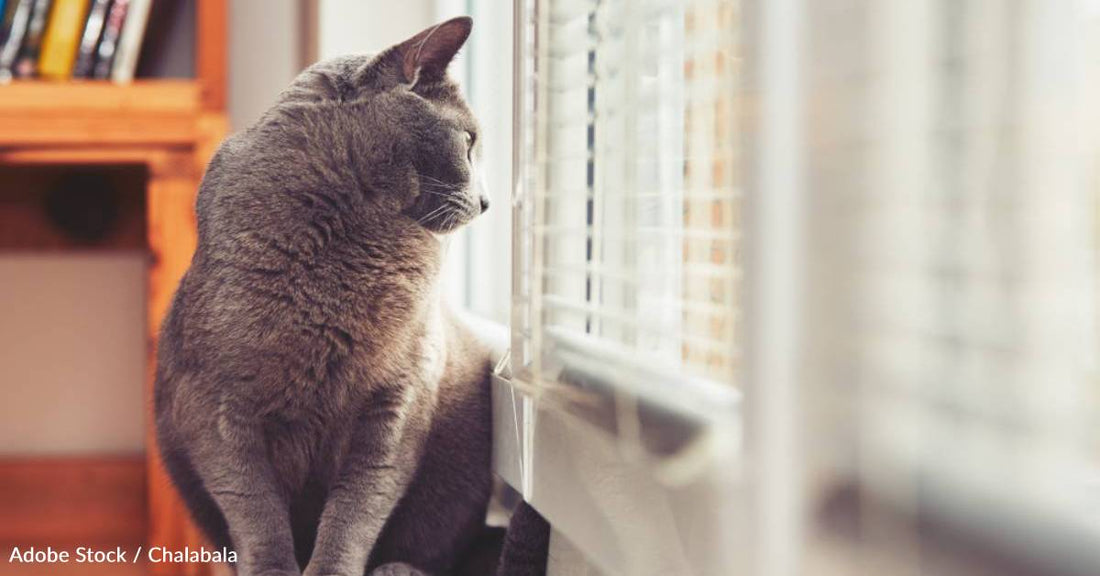The Reason Cats Chirp at Birds and How You Can Help Satisfy Their Prey Drive
Michelle Milliken
You're sitting in your living room, reading a book or, more likely, scrolling through your phone to distract yourself from more important things. Suddenly, your cat jumps up, runs to the window, and makes sounds that can most accurately be described as "ekekekek." You walk over and see this sound has been directed toward birds. What is this chattering or chirping, and why do our cats do it? There could be a few explanations.
Reasons Your Cat Chirps at Birds
When your cat sees something that would typically be prey, it triggers its hunting instincts. If kitty is kept safely indoors, she may not be able to hunt, but it doesn't mean the drive isn't there. The activation of these instincts may lead to a few things that induce that "ekekek."
Excitement at Seeing Prey
The initial jump up, rush over to the window, and wide eyes show your cat has had their interest piqued. They could be excited to see something they'd typically hunt. Their tails may also be swishing around rapidly and their pupils may dilate as they watch birds hop around on the other side of the glass. There is often teeth chattering at the same time, which may be your cat excitedly thinking about biting down on the prey.
Mimicking the Noise to Get Closer
Have you ever noticed the chirping sound kind of resembles that of a bird? That could be by design. One theory is that cats are trying to sound like birds so they can be in closer proximity to their prey. They're hoping to lure them to where they are. If successful, that would help snack time arrive a little sooner.
Frustration Over Being Unable to Catch the Prey
Unfortunately for your cat, if there is a window separating them from the bird that has so enticed them, they won't be able to reach it. After a while, that could be a little rough for your cat. That's why it's also believed that the chattering could be rooted in a bit of frustration. Though we can't know for sure, that may mean it's a good idea to help your cat channel her hunting instincts in another way.
How Can You Help Your Cat Channel Her Prey Drive?
If kitty is all indoors, or if you take steps to try to stop her from getting to prey by using something like a collar with a bell, it's very important to nurture that prey drive in other ways. Fortunately, you have plenty of tools to accomplish this without having to worry about any dead birds.
Cat Toys
Not only can cat toys provide your indoor kitties with enrichment and a bit of exercise, they can also give them the chance to perfect their hunting techniques. You may even see them wiggle their little bums just before they pounce. There might even be some thrilling bunny kick action! While catnip-filled toys can do the trick, there are also others that work their mind a bit more, like toys that dispense treats, those that move on their own, puzzle toys, and feather wands that you wave above your cat's head. Using such toys with her for at least 30 minutes a day is a good starting point.
Lasers
Laser pointers really drive cats a bit wild. They love going after that red dot. Unfortunately, this can sometimes lead to frustration because much like birds outside the window, they can never actually catch it. If you use a laser toy to help your cat exercise and "hunt," it may be a good idea to put a treat or a favorite toy on the dot after a while so your cat can actually get a reward. While some cats can chase the dot around for hours on end with no issues, some kitties will get a little upset at the lack of tangible results. Another important tip? Make sure you never shine the light into your cat's eyes.
Catio or Outdoor Enclosure
As more and more people keep their cats indoors, the concept of a catio has certainly caught on. That's when people enclose their back patios so their cats can enjoy being out in the fresh air. Often, people will build a smaller one off of a window, as well. To go further, some cat owners construct an enclosure on grass in their backyards so their kitties can feel the earth and plants under their paws. It can be covered with something like fine wire mesh to keep your cats safely inside. This allows them to be out in their more natural environment and experience all the stimulation that comes from it.
In summary, if you see your indoor cat getting a bit excited about those birds outside, remember that you can provide other satisfying ways for her to embrace her natural instincts.







